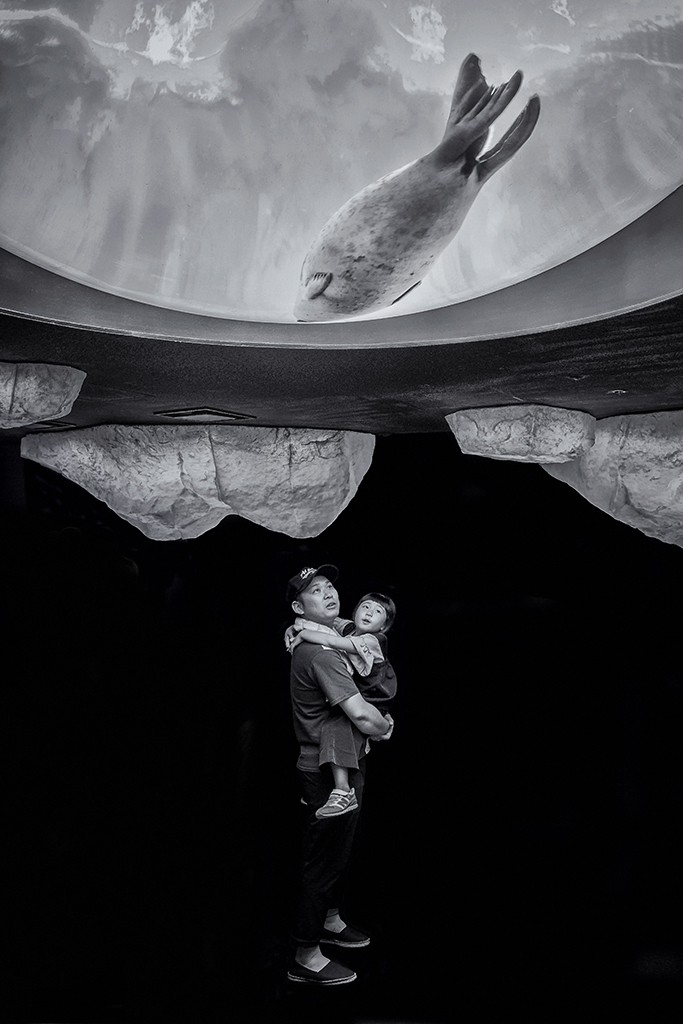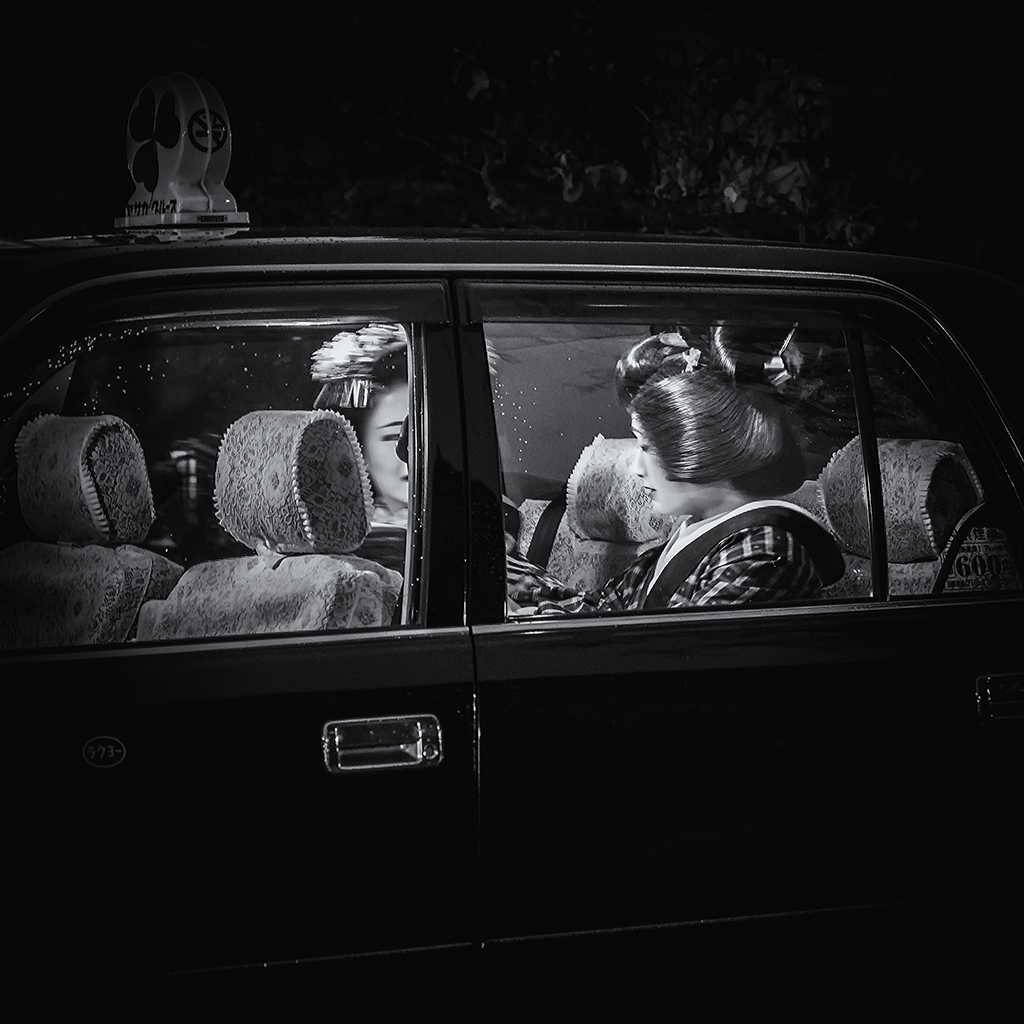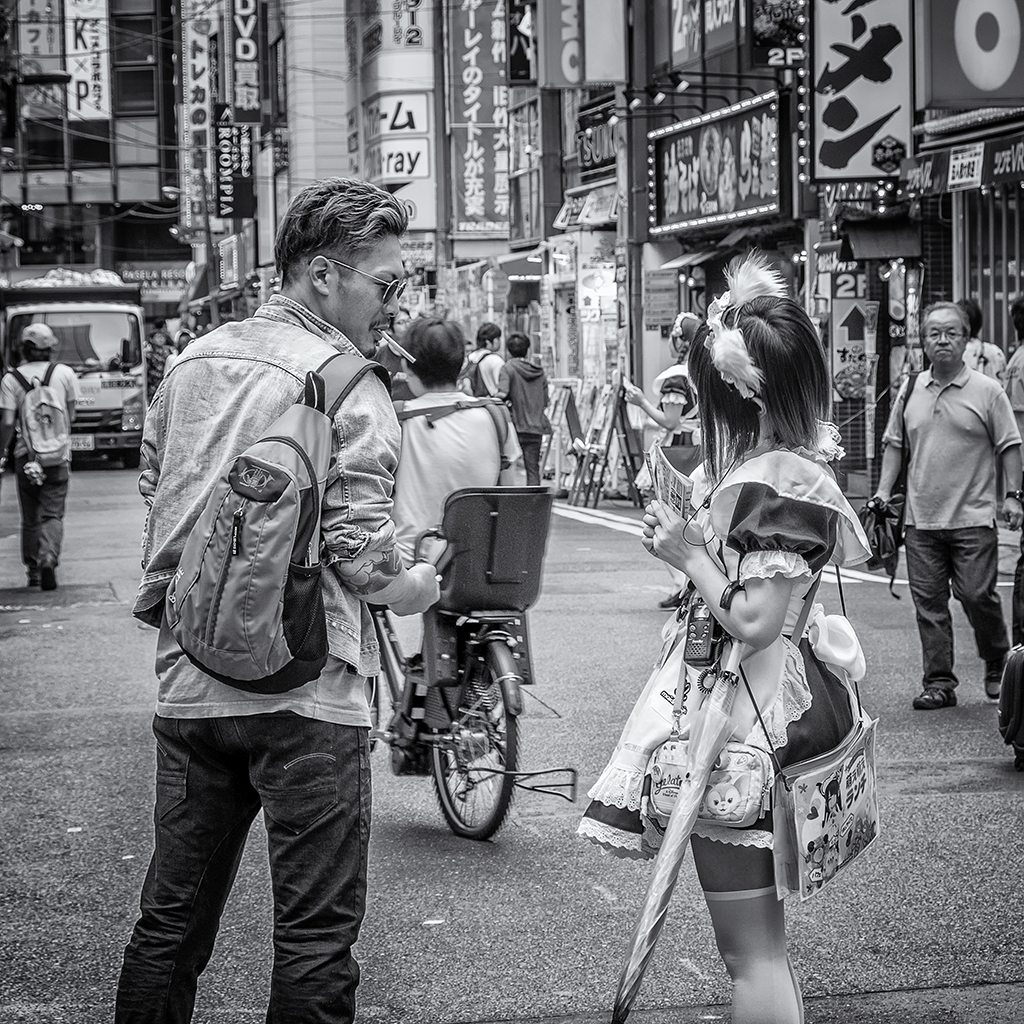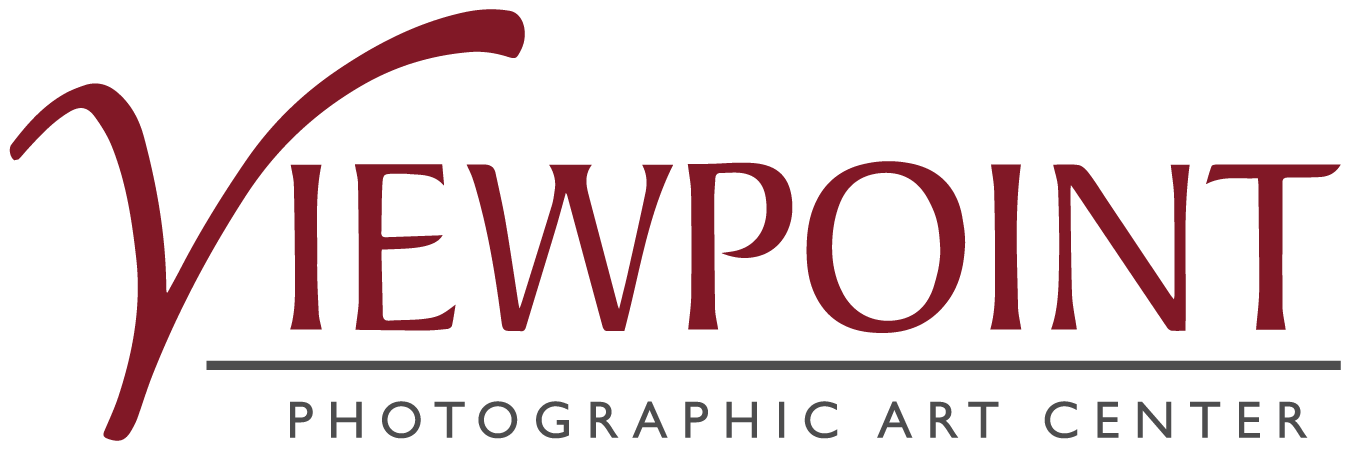Mark Coggins: J-DORI
Although my serious interest in photography began with a multi-year immersion in large format film photography, where I took mostly landscapes and still lifes with a heavy 4×5 view camera, I have evolved into a street photographer who relies on a lightweight digital rangefinder. In spite of the near 180-degree reversal in equipment, medium, and subject, I believe the training in large format has given me a deeper appreciation of composition, depth of field, and exposure that is quite beneficial in making my images.

In deciding where to aim my camera, I look for groups of people interacting or engaged in a common activity rather than individual subjects. As a photographer who has also published eight novels, I am perhaps drawn to tableaus that hint at a story. Take, for example, my image “Geisha Confidential.” How did the two geisha come to be in the cab in the middle of the night? What is the topic of their (seemingly) urgent conversation?
The desire to tell a story may also influence my style: I like sharply focused images with a full tonal range pulling detail into the shadows. Almost all my work is black and white with a colder toning. These choices echo the approach of documentary filmmakers and photojournalists looking to capture a scene in detail without the distraction of color.
Both the desire to tell a story and the urge to tell it with a clean, crisp image might be best summed up in the quote “f/8 and be there,” attributed to famous New York photojournalist and street photographer Arthur “Weegee” Fellig. f/8 as a f-stop setting suggests good depth of field and sufficient exposure for a sharp image, and “being there” implies putting oneself in the right place at the right time to capture a compelling interaction.
Whatever my subject and style choices, I hope my photographs convey the energy, communal bonds, and in some cases, inherent mystery and alienation of urban life.


